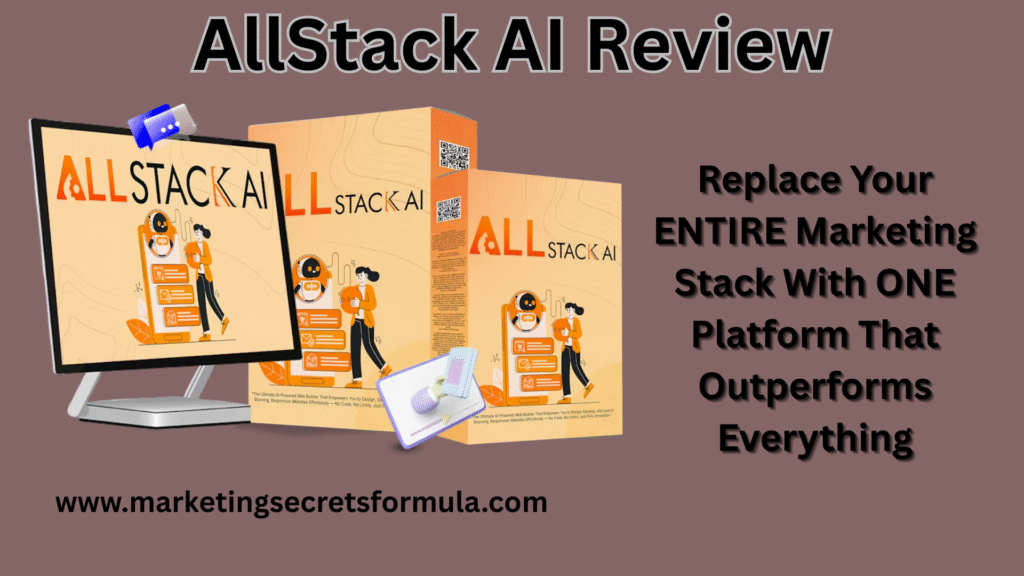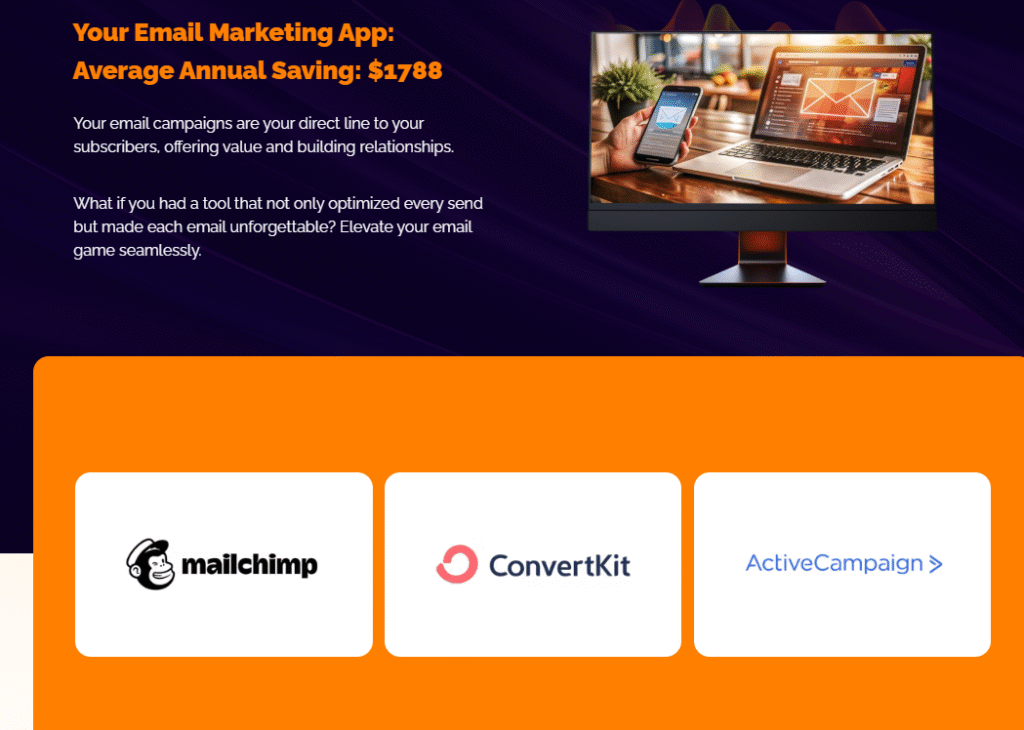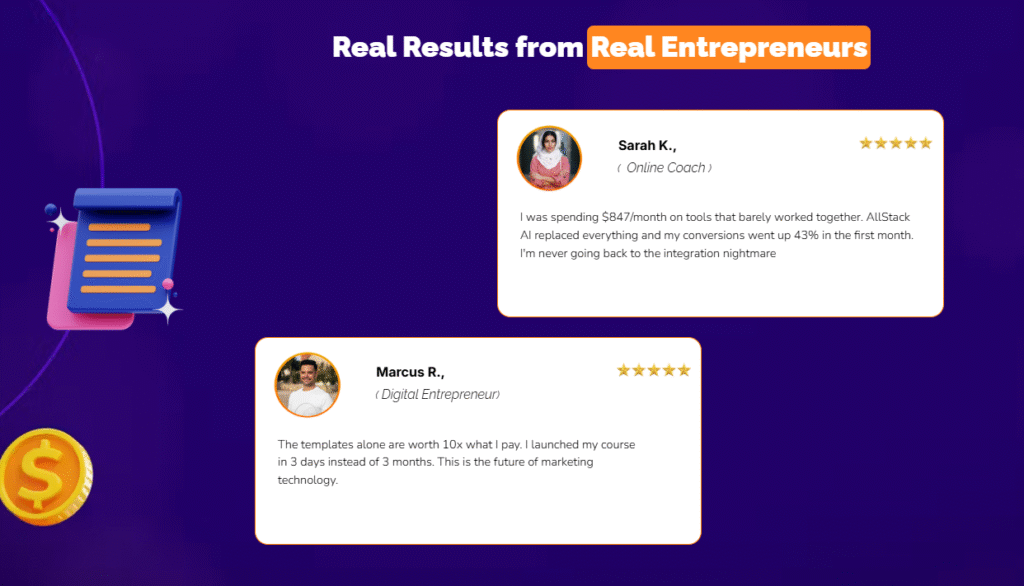AllStack AI Review (2025): Can It Really Predict Developer Performance?(Daniel Adetunji)
Can AI Predict Developer Success?
Welcome to my AllStack AI Review. I’ll cover its features, upgrades, pricing, bonuses and share my honest opinion.The modern software development lifecycle has evolved. No longer just about lines of code or Agile standups, teams are now looking toward predictive analytics and AI-driven tools to optimize developer performance, identify bottlenecks, and boost overall productivity. One tool that has caught attention in this space is AllStack AI—a platform claiming to offer predictive insights across engineering workflows.
Sounds futuristic? It kind of is. But the question remains: Does AllStack AI live up to the hype, or is it another over-promising platform lost in translation?
In this comprehensive review, we’ll dive deep into what AllStack AI offers in 2025, its core features, how it compares to alternatives, who it’s really for, and whether it’s worth your time and money. By the end, you’ll know whether AllStack AI belongs in your tech stack—or in your recycle bin.

What is AllStack AI?
AllStack AI is a predictive analytics platform designed specifically for software engineering teams. Unlike generic project management tools, AllStack plugs into your existing systems—Jira, GitHub, GitLab, Bitbucket, and others—to extract actionable insights, predict project outcomes, and improve developer performance.
In essence, it takes your dev data, runs it through machine learning models, and delivers dashboards and predictions around:
- Project delivery timelines
- Bottleneck detection
- Burnout risk analysis
- Team health and performance
- Resource allocation optimization
Think of it as AI-powered project management meets DevOps insights.


Overview – AllStack AI Review
✅Creator: Daniel Adetunji
✅Product: AllStack AI
✅Date Of Launch: 2025-Jun-30
✅Time Of Launch: 11:00 EST
✅Front-End Price: $17
✅Refund: YES, 30-day money-back Guarantee
✅Product Type: Software (online)
✅Support: Effective Response
✅Discount: >> GET THE BEST DISCOUNT HERE <<
✅Recommended: Highly Recommended
✅Skill Level Needed: All Levels
Key Features of AllStack AI
Let’s break down the most impressive and impactful features of AllStack AI as of 2025:
a. Predictive Delivery Timelines
AllStack uses historical project data to estimate delivery dates far more accurately than traditional burndown charts. It factors in team velocity, blocker frequency, developer workload, and even external variables like holidays or developer burnout risk.
Verdict: More reliable than gut feeling, less prone to human optimism bias.
b. Developer Burnout Detection
One standout feature is AllStack’s burnout risk analysis. Using patterns like increased hours, commits outside work hours, and sudden changes in productivity, it identifies developers at risk of burnout.
It doesn’t just stop at identifying; it offers actionable suggestions—like redistributing tasks or nudging managers to check in with their team.
Verdict: A game-changer for team health—especially in hybrid/remote environments.
c. Sprint Forecasting and Planning
AllStack integrates with tools like Jira to auto-generate sprint forecasts. It doesn’t just look at story points; it considers past sprint velocity, dependencies, blockers, and team changes to predict which tasks are likely to roll over.
Verdict: Helpful for agile teams tired of chaotic planning meetings.
d. Root Cause Analysis of Delivery Delays
When your project misses a deadline, AllStack doesn’t just shrug. It shows why it happened—be it a particular team member overwhelmed, QA bottlenecks, or unaddressed technical debt.
Verdict: Offers much-needed transparency and accountability.
e. Team Performance Heatmaps
These visual dashboards show who’s overloaded, who’s idle, and how balanced your workload really is. Think of it as a bird’s-eye view of team health and engagement.
Verdict: Better than micromanagement. Gives managers data, not drama.
How Does AllStack AI Work?
Step 1: Integrations
AllStack integrates seamlessly with:
- Jira, Trello, Azure DevOps
- GitHub, GitLab, Bitbucket
- Slack and MS Teams for alerts
- Google Calendar (for vacation/burnout context)
Within minutes, it begins syncing your engineering data for analysis.
Step 2: Data Processing
Once connected, AllStack processes historical and real-time data to build a baseline for team performance and workflows. Machine learning models then kick in to:
- Identify patterns
- Predict outcomes
- Flag risks
This learning is continuous—so the more you use it, the smarter it gets.
Step 3: Insight Delivery
All insights are delivered through:
- Dashboards
- Weekly summary emails
- Real-time alerts via Slack or Teams
- API/webhook support for custom workflows
It also supports exporting data to CSV or connecting to BI tools for deeper analysis.
Pros of Using AllStack AI
✅ 1. Predictive Power
AllStack goes beyond just tracking work—it tells you what will happen. This gives managers an edge in course correction, planning, and communication with stakeholders.
✅ 2. Burnout & Engagement Insights
In a world where quiet quitting and burnout are rampant, AllStack’s early warnings around disengagement or stress are invaluable.
✅ 3. Seamless Integration
Most dev teams already use Jira + GitHub. AllStack connects without disrupting your existing workflows.
✅ 4. Actionable Reports
It doesn’t just tell you something’s wrong—it tells you why and how to fix it.
✅ 5. Customization & Flexibility
You can customize dashboards, KPIs, and even predictive models based on your organization’s unique needs.


Cons of Using AllStack AI
❌ 1. Learning Curve for Managers
Non-technical managers may find the dashboards a bit overwhelming at first. Some training or onboarding may be required.
❌ 2. Developer Privacy Concerns
Tracking performance, commits, and working hours can feel “Big Brother”-ish. Without proper transparency, it might hurt trust.
❌ 3. Pricing Can Be High for Startups
AllStack isn’t cheap—especially for smaller teams. Pricing is tiered and based on team size and integrations.
❌ 4. Predictions Aren’t Always 100% Accurate
While more reliable than gut instinct, machine learning still has limits. AllStack works best when it’s supplementing human judgment—not replacing it.
Who Should Use AllStack AI?
✅ Ideal For:
- Mid-to-large engineering teams
- Agile product teams looking to improve delivery predictability
- Remote or hybrid teams needing visibility into team health
- Tech managers overseeing multiple squads or global teams
🚫 Not Ideal For:
- Solo developers or freelancers
- Tiny teams with flat structures
- Startups without enough data history
- Companies averse to AI-driven decision-making
Pricing & Plans (2025)
While AllStack doesn’t publish pricing publicly for all tiers, here’s a general breakdown based on recent data:
| Plan | Ideal For | Monthly Cost (Est.) | Key Features |
|---|---|---|---|
| Starter | Up to 10 users | ~$199/mo | Core analytics, Jira + GitHub integration |
| Pro | 11-50 users | ~$499/mo | Full dashboards, burnout detection, sprint forecasting |
| Enterprise | 50+ users | Custom Pricing | Full features + support + custom ML models |
Add-ons like Slack integration, API access, or SSO may incur additional costs.

How Does AllStack AI Compare to Alternatives?
| Tool | Strength | Weakness |
|---|---|---|
| AllStack AI | Predictive analytics, burnout detection, team health | Premium pricing, learning curve |
| LinearB | Focused on engineering metrics, real-time visibility | Less predictive, no burnout tracking |
| Waydev | Git analytics, cost reporting | Lacks team engagement insights |
| Jellyfish | Strong on resource allocation and engineering ROI | Heavier enterprise focus |
Verdict: AllStack AI offers the most holistic approach—but that also means it’s more complex and expensive.
Real-World User Feedback (2025)
Here’s what actual users have said about AllStack AI:
🧑💻 “We use AllStack to manage 5 distributed teams across time zones. The burnout alerts alone saved us from losing two senior devs.” — CTO at a Fintech Startup
👩💼 “I hated Jira reports. AllStack gives me forecasts I can actually trust—and use in board meetings.” — Engineering Manager, SaaS company
😐 “Cool tool, but my devs felt it was too much tracking. We had to have a serious talk about transparency.” — VP of Engineering, Enterprise Tech
Tips for Getting the Most Out of AllStack AI
- Be Transparent: Let your devs know what data is tracked and why.
- Customize Dashboards: Don’t just rely on defaults—tune metrics to what matters.
- Act on Alerts: Predictions are only useful if you take action.
- Pair with Culture: No AI can replace empathy, 1-on-1s, or real human leadership.
After purchasing, you’ll get my Special Bonus Instantly on your access page as an Affiliate Bonus button on WarriorPlus.

Before concluding my AllStack AI Review, I promised to share my very Special, Unique, and developed PFTSES Formula with you for free.

Final Verdict:
✅ If you manage a medium or large dev team and want predictive insights that go beyond Jira charts—AllStack AI is worth the investment.
❌ If you’re a solo developer or looking for a cheap analytics add-on, this might be overkill.

Your Turn:
Are you using AllStack AI or considering it? Share your experience in the comments—or reach out with questions, and I’ll be happy to give personalized feedback!
Would you like this post exported in HTML, Word, or PDF format? Or do you want help turning it into a YouTube video script or LinkedIn article?
Conclusion: Should You Add AllStack AI to Your Engineering Stack?
In a world where software development is increasingly complex, distributed, and deadline-driven, AllStack AI delivers something many tools promise but few actually offer—predictive clarity. It doesn’t just show you what’s happening; it forecasts what’s about to go wrong, giving you a chance to fix it before it spirals.
From burnout prevention to sprint forecasting, and from team performance heatmaps to data-driven retrospectives, AllStack AI stands out as a smart solution for modern dev teams trying to move fast without breaking everything (or everyone).
That said, this isn’t a plug-and-play toy. It’s a serious platform that requires thoughtful integration, transparent communication with your team, and a willingness to act on the data it provides. And while the price tag may give startups pause, the long-term ROI for mid-to-large teams could be significant—especially if it prevents delays, missed deadlines, or even employee churn.
Bottom line?
If you’re leading a growing engineering team and want to manage with insight instead of instinct, AllStack AI might just be your new secret weapon.
Just remember: even the smartest AI can’t replace good leadership, clear communication, and a team culture that puts people first. But it can certainly help you lead smarter, plan better, and sleep a little easier at night.

Ready to take your dev team’s performance from reactive to predictive? AllStack AI might be exactly what your stack’s been missing.
See my other reviews: HostSonic 2.0 Review, Amaze AI Review, FitnessAI Review, Traffic Hacks Pro Review, and SuperHero AI Review.
Thanks for reading my AllStack Ai Review to the end, and I hope it will help you make your purchase decision.
Source : AllStack AI Review (2025): Can It Really Predict Developer Performance?(Daniel Adetunji)
Affiliate Disclaimer :
Some of the links in this article may be affiliate links, which means I receive a small commission at NO ADDITIONAL cost to you if you decide to purchase something. While we receive affiliate compensation for reviews / promotions on this article, we always offer honest opinions, user experiences and real views related to the product or service itself. Our goal is to help readers make the best purchasing decisions, however, the testimonies and opinions expressed are ours only. As always you should do your own thoughts to verify any claims, results and stats before making any kind of purchase. Clicking links or purchasing products recommended in this article may generate income for this product from affiliate commissions and you should assume we are compensated for any purchases you make. We review products and services you might find interesting. If you purchase them, we might get a share of the commission from the sale from our partners. This does not drive our decision as to whether or not a product is featured or recommended.
Comments
Post a Comment